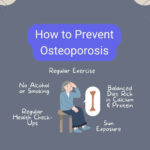While both conditions of arthritis cause joint pain, they have distinct causes and symptoms.
Rheumatoid arthritis (RA) is an autoimmune disease that occurs when the immune system mistakenly attacks the synovial membrane, leading to inflammation in multiple joints.
On the other hand, osteoarthritis (OA) is a degenerative joint disease characterized by the breakdown of cartilage and bone within the affected joints.
Rheumatoid Arthritis vs Osteoarthritis
Causes and Triggers
Rheumatoid arthritis vs osteoarthritis are two distinct conditions that affect the joints, but they have different causes.
Osteoarthritis is primarily a result of aging and wear-and-tear on the joints. Over time, the cartilage that works as a cushion can break down, leading to pain, stiffness, and reduced mobility.
Rheumatoid arthritis is an autoimmune disease where the body’s immune system mistakenly attacks its own tissues, including the joints. The exact triggers for rheumatoid arthritis remain unknown.
Joint Involvement
These two types of arthritis differ in their patterns.
RA tends to affect multiple joints symmetrically. This means that if a joint on one side of the body is affected, there is usually a corresponding joint on the other side that experiences similar symptoms. It tends to primarily target smaller joints such as those in hands and feet.
In contrast, OA typically affects one or a few specific joints asymmetrically. For example, it commonly affects weight-bearing joints like knees and hips more than others. It commonly affects larger, weight-bearing joints such as knees, hips, and the spine.
Morning Stiffness
Morning stiffness is a common symptom. However, there are differences in their presentation between rheumatoid arthritis vs osteoarthritis.
In RA, morning stiffness tends to last longer than 30 minutes and may persist throughout the day for some individuals. This prolonged stiffness can significantly impact daily activities and mobility.
In OA cases, morning stiffness usually subsides within 30 minutes or less.
Systemic Symptoms
While both conditions primarily affect the joints, rheumatoid arthritis often presents with additional systemic symptoms not typically seen in osteoarthritis cases. These systemic symptoms may include fatigue, fever, and unintended weight loss. These manifestations indicate that rheumatoid arthritis has broader effects beyond just joint pain and stiffness.
In contrast, osteoarthritis is primarily localized to the affected joints and does not typically cause systemic symptoms.
Inflammation
One key difference between rheumatoid arthritis vs osteoarthritis lies in the extent of joint inflammation.
In RA, inflammation plays a central role in disease progression and symptoms. The inflamed joints often appear swollen, red, and feel warm to touch due to increased blood flow to the affected area.
On the other hand, while some level of inflammation may occur in OA, it tends to be less severe than in RA. Inflammation in OA usually occurs intermittently rather than consistently, and it may not be as visible or pronounced as in RA.
Occurrence
Rheumatoid arthritis vs osteoarthritis also differ in terms of when they commonly occur in individuals’ lives.
Rheumatoid arthritis is known for its ability to affect people of all ages, including children (juvenile rheumatoid arthritis). While it most commonly develops between the ages of 30 and 60, it can also occur earlier or later.
Osteoarthritis typically occurs later in life due to aging or joint injury.
X-Ray Findings
X-rays play a crucial role in diagnosing and differentiating between rheumatoid arthritis vs osteoarthritis. When examining X-ray images, distinct patterns can be observed for each condition.
OA commonly shows joint space narrowing, indicating that the cartilage has worn down between the bones. Bone spurs may develop as the body attempts to stabilize the joint.
On the other hand, RA often presents with joint erosion and deformity due to inflammation and damage to the synovial lining of the joints.
Differentiating between rheumatoid arthritis vs osteoarthritis
Risk Factors for Osteoarthritis
Let’s explore some of the key risk factors associated with this condition:
- Age: The likelihood of experiencing joint pain and damage increases as cartilage deteriorates over time.
- Weight: Excessive weight places additional stress on the joints. This increased load can accelerate joint degeneration and contribute to the development of osteoarthritis.
- Injuries: Damage caused by trauma disrupts the normal functioning of joints and makes them more susceptible to osteoarthritis later in life.
- Genetics: Certain gene variations have been identified as potential risk factors for this condition.
- Work-Related Risks: Jobs that involve repetitive joint movements or heavy lifting (construction work, farming, and assembly line jobs) put additional strain on the joints, increasing the risk of degenerative changes over time.
Risk factors for rheumatoid arthritis
- Family history: If you have a close relative, such as a parent or sibling, who has been diagnosed with rheumatoid arthritis (RA), it may indicate a genetic predisposition to the condition.
- Gender: Rheumatoid arthritis affects women more frequently than men. The reasons behind this gender disparity are not entirely clear but hormonal factors are believed to play a role.
- Smoking: Research has consistently shown that smokers are more likely to develop RA compared to non-smokers.
Treatment Options
Nonsteroidal anti-inflammatory drugs (NSAIDs)
One of the most common treatment options for both OA and RA is the use of nonsteroidal anti-inflammatory drugs (NSAIDs). These medications help manage pain and reduce inflammation in the affected joints. NSAIDs work by blocking certain enzymes that cause inflammation, providing relief to individuals with both conditions. They are available over-the-counter or can be prescribed by a healthcare professional.
Physical therapy
Physical therapy plays a crucial role in managing both types. It involves exercises and techniques that aim to improve joint function, mobility, and strength. In osteoarthritis, physical therapy focuses on strengthening the muscles surrounding the affected joint to provide better support. For individuals with rheumatoid arthritis, physical therapy helps maintain joint flexibility and range of motion while minimizing pain.
Red light therapy
Red light therapy is an emerging treatment option that has shown promise in reducing inflammation and managing arthritic pain. This non-invasive procedure involves exposing the affected joints to low-level red light wavelengths. The light penetrates deep into the tissues, stimulating cellular energy production and promoting healing.
Disease-modifying antirheumatic drugs (DMARDs)
For individuals diagnosed with rheumatoid arthritis, disease-modifying antirheumatic drugs (DMARDs) are often prescribed. These medications work by suppressing the immune system’s response that causes joint inflammation in rheumatoid arthritis. DMARDs not only help manage symptoms but also slow down disease progression, preventing further damage to the joints. There are various types of DMARDs available, including traditional DMARDs like methotrexate and biologic DMARDs like tumor necrosis factor inhibitors.
Joint replacement surgery
In severe cases of osteoarthritis where other treatment options have not provided sufficient relief, joint replacement surgery may be considered. This procedure involves removing the damaged joint surfaces and replacing them with artificial implants made of metal or plastic. However, joint replacement surgery is less common in RA due to the systemic nature of the disease. RA affects multiple joints throughout the body, making it challenging to replace all affected joints surgically.
Lifestyle modifications
In addition to medical treatments, lifestyle modifications can greatly benefit individuals with both OA and RA.
Read this article, to learn how to prevent arthritis.
Common Questions
Now that you have a better understanding of rheumatoid arthritis vs osteoarthritis, let’s address some common questions you may have.
Can rheumatoid arthritis and osteoarthritis be cured?
Unfortunately, there is no cure for either condition. However, with proper management and treatment, it is possible to alleviate symptoms and improve quality of life.
Are there any natural remedies for rheumatoid arthritis or osteoarthritis?
Natural remedies such as red light therapy, hot/cold therapy, exercise, and dietary changes can help manage symptoms.
Can young people develop these types of arthritis?
While both conditions are more commonly associated with aging, they can affect individuals of any age. RA tends to occur earlier in life compared to OA. If you’re experiencing joint pain or other related symptoms at a young age, don’t hesitate to seek medical advice.
What lifestyle changes can I make to manage my symptoms?
Maintaining a healthy weight through regular exercise and following a balanced diet can help reduce the impact on your joints. Managing stress levels and getting enough restful sleep are crucial aspects of symptom management.
Remember that everyone’s experience with RA and OA is unique. It’s important to consult with a healthcare professional who can provide personalized advice based on your specific situation. By taking proactive steps and seeking proper treatment, you can effectively manage these conditions and improve your overall well-being.
References
https://medlineplus.gov/ency/article/000816.htm
- How To Improve Gut Microbiome – 26 May 2024
- Chemo neuropathy treatment: What to do? – 19 May 2024
- How to Prevent Osteoporosis: Effective Strategies & Simple Steps – 28 December 2023






Leave a Reply